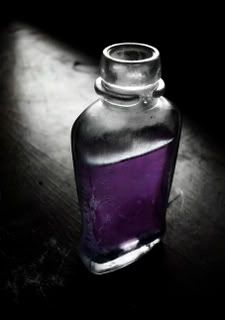The Gothic begins with later-eighteenth-century writers' turn to the past; in the context of the Romantic period, the Gothic is, then, a type of imitation medievalism. When it was launched in the later eighteenth century, The Gothic featured accounts of terrifying experiences in ancient castles — experiences connected with subterranean dungeons, secret passageways, flickering lamps, screams, moans, bloody hands, ghosts, graveyards, and the rest. By extension, it came to designate the macabre, mysterious, fantastic, supernatural, and, again, the terrifying, especially the pleasurably terrifying, in literature more generally. Closer to the present, one sees the Gothic pervading Victorian literature (for example, in the novels of Dickens and the Brontës), American fiction (from Poe and Hawthorne through Faulkner), and of course the films, television, and videos of our own (in this respect, not-so-modern) culture.
The Gothic revival, which appeared in English gardens and architecture before it got into literature, was the work of a handful of visionaries, the most important of whom was Horace Walpole (1717–1797), novelist, letter writer, and son of the prime minister Sir Robert Walpole. In the 1740s Horace Walpole purchased Strawberry Hill, an estate on the Thames near London, and set about remodeling it in what he called "Gothick" style, adding towers, turrets, battlements, arched doors, windows, and ornaments of every description, creating a kind of spurious medieval architecture that survives today mainly in churches, military academies, and university buildings. The project was extremely influential, as people came from all over to see Strawberry Hill and returned to Gothicize their own houses.
When the Gothic made its appearance in literature, Walpole was again a chief initiator, publishing The Castle of Otranto (1764), a short novel in which the ingredients are a haunted castle, a Byronic villain (before Byron's time — and the villain's name is Manfred!), mysterious deaths, supernatural happenings, a moaning ancestral portrait, a damsel in distress, and, as the Oxford Companion to English Literature puts it, "violent emotions of terror, anguish, and love." The work was tremendously popular, and imitations followed in such numbers that the Gothic novel (or romance) was probably the commonest type of fiction in England for the next half century. It is noteworthy in this period that the best-selling author of the genre (Ann Radcliffe), the author of its most enduring novel (Mary Shelley), and the author of its most effective sendup (Jane Austen) were all women.
This topic offers extracts from some of the most frequently mentioned works in the Gothic mode: Walpole's Otranto as the initiating prototype; William Beckford's Vathek (1786), which is "oriental" rather than medieval but similarly blends cruelty, terror, and eroticism; two extremely popular works by the "Queen of Terror," Ann Radcliffe, The Romance of the Forest (1791) and The Mysteries of Udolpho (1794); Matthew Gregory Lewis's The Monk (1796), involving seduction, incestuous rape, matricide and other murders, and diabolism; and two works of 1818 poking fun at the by-then well-established tradition, Jane Austen's Northanger Abbey (which refers specifically to the two Radcliffe novels just mentioned) and Thomas Love Peacock's Nightmare Abbey.
Mary Shelley's Frankenstein (1818) was inspired, as Shelley explains in her introduction to the edition of 1831, by a communal reading of German ghost stories with her husband and Byron during bad weather on the shores of Lake Geneva. Frankenstein is the single most important product of this Gothic tradition, but it considerably transcends its sources. Its numerous thematic resonances relate to science, poetry, psychology, alienation, politics, education, family relationships, and much else. Even so, one cannot imagine a more archetypically Gothic circumstance than the secret creation of an eight-foot-tall monster out of separate body parts collected from charnel houses; some of Victor Frankenstein's most extravagant rhetoric in the novel almost exactly reproduces the tone, and even some of the words, of the extract given here describing Isabella's distress in Otranto — as in this passage expressing Victor's feelings of horror when Justine is condemned for the murder of his brother William:
My own agitation and anguish was extreme during the whole trial. I believed in her innocence; I knew it. Could the daemon, who had (I did not for a minute doubt) murdered my brother, also in his hellish sport have betrayed the innocent to death and ignominy? I could not sustain the horror of my situation; and when I perceived that the popular voice, and the countenances of the judges, had already condemned my unhappy victim, I rushed out of the court in agony. The tortures of the accused did not equal mine; she was sustained by innocence, but the fangs of remorse tore my bosom, and would not forego their hold. . . .
I cannot pretend to describe what I then felt. I had before experienced sensations of horror; and I have endeavoured to bestow upon them adequate expressions, but words cannot convey an idea of the heart-sickening despair that I then endured. . . . (volume 1, chapter 7)
More pervasive signs of Gothic influence show up in some of the most frequently read Romantic poems — for example, the account of the skeleton ship and the crew's reaction ("A flash of joy . . . And horror follows") in Coleridge's The Rime of the Ancient Mariner; the atmosphere, setting, and fragmentary plot of witchery and seduction in Coleridge's Christabel; the initial scene ("a Gothic gallery") and most of the rest of Byron's Manfred; and the medievalism and several details of the plot of Keats's The Eve of St. Agnes, including Porphyro's invasion of Madeline's bedroom, which, while the poem is always at some level an idealized tale of young love, has obvious connections with the predatory overtones of our extracts from both Udolpho and The Monk.
source: the Norton Anthology of English Literature




0 comments:
Post a Comment